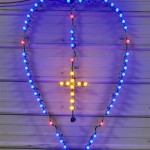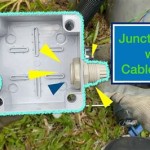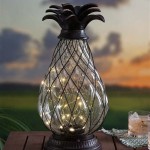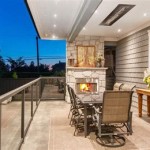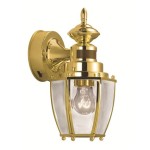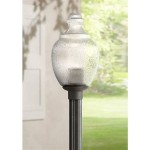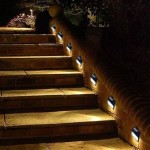Residential Outdoor Lighting Regulations in Los Angeles County, CA
Los Angeles County, like many urban and suburban areas, has implemented specific regulations concerning residential outdoor lighting. These regulations are designed to balance the needs of residents for safety and security with broader community goals, such as minimizing light pollution, conserving energy, and protecting nocturnal ecosystems. Understanding and adhering to these regulations is crucial for homeowners planning to install or modify outdoor lighting on their properties. Failure to comply can result in warnings, fines, or even legal action. This article provides a comprehensive overview of the key aspects of Los Angeles County’s residential outdoor lighting regulations.
The justification for these regulations stems from growing awareness of the negative impacts of excessive and poorly designed outdoor lighting. Light pollution, characterized by excessive artificial light, degrades the night sky, making it difficult to observe stars and other celestial objects. It also disrupts the natural behaviors of nocturnal animals, affecting their feeding, mating, and migration patterns. Furthermore, excessive light can intrude on neighboring properties, causing discomfort and disrupting sleep patterns. From an environmental perspective, inefficient outdoor lighting contributes to energy waste and greenhouse gas emissions. Therefore, the regulations aim to mitigate these negative impacts while still allowing residents to illuminate their properties for legitimate security and aesthetic purposes.
The specific ordinances governing outdoor lighting in Los Angeles County are primarily found within the County’s Building Code and Zoning Code. These codes are subject to updates and amendments, so it is essential for homeowners to consult the latest versions available on the Los Angeles County Department of Regional Planning website or to consult with a qualified professional familiar with local regulations. Individual cities within Los Angeles County may also have their own, sometimes stricter, regulations that supersede the County’s rules. Therefore, it is critical to check both County and city ordinances before undertaking any outdoor lighting project.
Light Trespass and Glare Reduction
One of the primary concerns addressed by the regulations is light trespass, which refers to unwanted light spilling onto neighboring properties. The regulations aim to minimize light trespass through a variety of measures. Firstly, they often specify maximum light levels or foot-candle limits at the property line. This means that the amount of light emanating from a fixture must not exceed a certain threshold when measured at the boundary between properties. Typically, the allowable light level decreases as you move further away from the light source to reduce the effect on neighbors. The regulations may use different methods to measure light levels such as foot-candles or lumens.
Shielding is another crucial aspect of preventing light trespass and reducing glare. Outdoor lighting fixtures are generally required to be shielded, meaning that the light source is not directly visible from neighboring properties or public rights-of-way. Full cutoff fixtures, which direct all light downward and prevent any light from shining above the horizontal plane, are often recommended or even required in certain zones. This type of shielding minimizes upward light pollution and directs light where it is needed, improving visibility and reducing glare. The use of unshielded or poorly shielded fixtures is typically prohibited or severely restricted.
The regulations also often address the angle at which light can be emitted from a fixture. Limiting the upward angle of light prevents it from shining directly into the eyes of passersby or neighboring residents. By controlling both the intensity and direction of light, the regulations aim to create a more comfortable and safe environment for everyone. Glare causes discomfort and can impair visibility, posing a safety hazard, particularly for drivers and pedestrians. Properly shielded and directed lighting minimizes glare and improves overall visibility, enhancing safety and security.
Fixture Types and Lamp Specifications
The type of lighting fixture and the lamp it uses are often subject to specific regulations. Certain types of lamps, such as high-pressure sodium or metal halide lamps, which emit a harsh, bright light, may be restricted or prohibited in residential areas. Regulations may favor the use of LED (Light Emitting Diode) lighting, which is generally more energy-efficient and can be designed to produce a more controlled and pleasant light. There are specific color temperature limitations on LED lights as well to reduce blue light pollution. This blue light can have negative effects on sleep and wildlife.
The wattage or lumen output of outdoor lighting fixtures may also be limited. This is intended to prevent the use of excessively bright lights that can contribute to light pollution and glare. The regulations often specify maximum wattage or lumen limits for different types of fixtures and locations on the property. Homeowners should carefully consider the appropriate wattage or lumen output for their specific lighting needs, taking into account the size of the area to be illuminated and the surrounding environment. Overlighting can be just as ineffective as underlighting, creating harsh shadows and glare that can impair visibility.
Furthermore, regulations may address the design and appearance of outdoor lighting fixtures. Fixtures that are excessively large or intrusive may be prohibited, particularly if they detract from the aesthetic character of the neighborhood. Fixtures may be required to be compatible with the architectural style of the house and the surrounding landscape. The goal is to ensure that outdoor lighting fixtures are not only functional but also visually appealing and harmonious with the environment. Some neighborhoods also have specific architectural control committees that must approve lighting designs prior to installation.
Time Controls and Motion Sensors
To further minimize energy waste and light pollution, the regulations often encourage or require the use of time controls and motion sensors for outdoor lighting. Time controls, such as timers or photocells, automatically turn lights on and off at predetermined times or based on ambient light levels. This prevents lights from being left on unnecessarily during daylight hours or when they are not needed. Motion sensors automatically turn lights on only when motion is detected, providing illumination only when it is needed for security or safety purposes. These sensors can be adjusted for sensitivity and duration to prevent false alarms and minimize unnecessary light usage.
The regulations may specify the types of time controls or motion sensors that are acceptable and the circumstances under which they are required. For example, security lighting may be required to be equipped with motion sensors, while decorative lighting may be permitted to be controlled by timers. The proper installation and calibration of time controls and motion sensors are crucial to ensure that they function effectively and do not contribute to nuisance lighting. Many advanced lighting systems are digitally controlled and can be programmed for precise operation. Digital controls are often beneficial for larger properties, and can be easily adjusted.
The combination of time controls and motion sensors provides a flexible and efficient approach to outdoor lighting management. By automatically adjusting lighting based on time and activity, these devices can significantly reduce energy consumption and light pollution while still providing adequate illumination for safety and security. Homeowners should carefully consider the benefits of incorporating these technologies into their outdoor lighting designs.
Enforcement of residential outdoor lighting regulations in Los Angeles County is typically the responsibility of the County’s Department of Regional Planning or the building and safety departments of individual cities. Enforcement may be triggered by complaints from neighbors or through routine inspections. Violations of the regulations can result in warnings, fines, or orders to modify or remove non-compliant lighting fixtures. In some cases, repeated or egregious violations may lead to legal action.
Homeowners who are unsure about the specific requirements of the regulations should consult with a qualified professional, such as a lighting designer, electrician, or building contractor, who is familiar with local ordinances. These professionals can provide guidance on selecting appropriate lighting fixtures, designing effective lighting plans, and ensuring compliance with the regulations. Obtaining the necessary permits and inspections before installing or modifying outdoor lighting is also crucial to avoid potential problems down the road. By working with qualified professionals and following the proper procedures, homeowners can ensure that their outdoor lighting projects are both functional and compliant with local regulations.
Furthermore, it is important to remember that the ultimate goal of the regulations is to create a more sustainable and livable environment for everyone. By minimizing light pollution, conserving energy, and protecting nocturnal ecosystems, we can all contribute to a healthier and more vibrant community. Understanding and adhering to residential outdoor lighting regulations is a small but important step in achieving this goal.
Csd Modifications The Ordinance Modifies Specific Community Standards Districts Leona Valley Acton Santa Monica Mountains N
Csd Modifications The Ordinance Modifies Specific Community Standards Districts Leona Valley Acton Santa Monica Mountains N
Outdoor Lighting

Ventura County Outdoor Lighting Restrictions Resource Management Agency
Csd Modifications The Ordinance Modifies Specific Community Standards Districts Leona Valley Acton Santa Monica Mountains N

Ojai Valley Dark Sky Ordinance Frequently Asked Questions Ventura County Resource Management Agency

County S Down On Light Trespassing Lake Elsinore Ca Patch

Common Zoning Violations La County Planning

Ventura County Outdoor Lighting Restrictions Resource Management Agency
Title 22 Planning And Zoning
